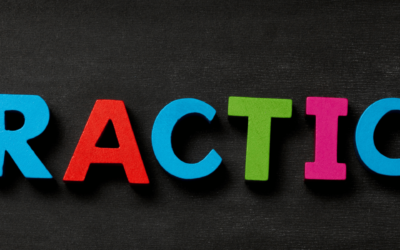When you face a scenario assessment, you're not just answering questions; you're showcasing your ability to think critically and respond thoughtfully under pressure. It's essential to demonstrate your communication, problem-solving, and time management skills to stand out. But how exactly do you analyze situations effectively and craft responses that highlight empathy and clarity? Where do most candidates go wrong, and how can you avoid those pitfalls? Understanding these elements is crucial for success, and there are specific strategies you can use to hone your skills and boost your confidence. So, what's the first step to acing your next assessment?
Understanding Scenario Assessments
Scenario assessments are a critical tool for evaluating how well candidates can handle real-world situations. You'll encounter a range of hypothetical scenarios that mirror challenges faced in the job. These assessments are designed to measure your problem-solving skills, decision-making abilities, and adaptability.
In a scenario assessment, you're typically presented with a situation that requires immediate attention. You might need to resolve a conflict between team members, prioritize tasks under tight deadlines, or develop a strategy to address a sudden business challenge. The goal is to see how you react, prioritize, and execute under pressure.
To prepare, familiarize yourself with common workplace problems relevant to the role you're applying for. Think about how you'd handle these situations, and practice articulating your thought process clearly and concisely. Remember, it's not just about finding the right answer but demonstrating a logical and efficient approach to problem-solving.
During the assessment, stay calm and focused. Read the scenario carefully, identify key issues, and consider the potential consequences of different actions. Your ability to analyze the situation and make sound decisions will be crucial.
Ultimately, scenario assessments give you an opportunity to showcase your practical skills and readiness for the job.
Key Skills to Showcase
To excel in scenario assessments, you should focus on showcasing effective communication techniques, robust problem-solving strategies, and strong time management skills.
Communicate clearly and concisely to convey your ideas effectively.
Manage your time wisely to ensure you address all aspects of the scenario thoroughly.
Effective Communication Techniques
Mastering effective communication techniques is vital for acing a scenario assessment. Clear, concise, and confident communication can set you apart.
Start by actively listening. Show you're engaged by nodding or giving verbal acknowledgments. This demonstrates respect and understanding, which are crucial for effective interaction.
When it's your turn to speak, be clear and to the point. Avoid jargon unless you're sure the other party understands it. Use simple language to convey complex ideas. This ensures your message is accessible and reduces the risk of misunderstanding.
Non-verbal cues matter too. Maintain eye contact, use open body language, and avoid crossing your arms. These signals help in building trust and rapport, making your communication more effective.
Additionally, ask open-ended questions to encourage dialogue. This shows you value the other person's input and fosters a collaborative atmosphere.
Summarize key points at the end of your conversation to confirm mutual understanding.
Lastly, adapt your communication style to your audience. Whether you're speaking to a colleague, manager, or client, tailor your approach to their preferences and needs. This flexibility demonstrates empathy and enhances the effectiveness of your interactions.
Problem-Solving Strategies
In addition to effective communication, showcasing your problem-solving strategies is crucial for excelling in a scenario assessment. When faced with complex situations, your ability to analyze issues, identify root causes, and generate viable solutions sets you apart.
Start by breaking down the problem into manageable parts. This not only helps in understanding the issue but also makes it easier to communicate your thought process.
Don't forget to leverage your analytical skills. Use data and evidence to support your decisions. It's not just about finding a solution but finding the most effective one. Be prepared to adapt if new information emerges. Flexibility in your approach demonstrates that you can handle uncertainty and change.
Collaboration is another key aspect. Often, the best solutions come from teamwork. Don't hesitate to seek input from others or consider different perspectives. This shows that you value diverse viewpoints and can lead a team to consensus.
Lastly, make sure you can clearly articulate your problem-solving process. Explain why you chose a particular solution and how it addresses the core issue. This clarity not only showcases your problem-solving abilities but also your strategic thinking.
Time Management Skills
Effective problem-solving often goes hand-in-hand with strong time management skills. In scenario assessments, you'll face time constraints that test your ability to prioritize tasks and allocate resources wisely. Mastering these skills shows that you can remain calm and efficient under pressure.
Start by breaking down tasks into smaller, manageable chunks. This approach helps you see the bigger picture without feeling overwhelmed. Use tools like to-do lists or digital planners to keep track of deadlines and progress.
Prioritize tasks based on urgency and importance, ensuring that critical issues get immediate attention.
Next, set time limits for each task. This keeps you focused and prevents you from spending too much time on less important activities. When you allocate time, be realistic. Overestimating your abilities can lead to rushed, subpar work, while underestimating can cause unnecessary stress.
Analyzing the Scenario
When you're faced with a scenario assessment, the first step is to break down the situation into manageable components. Start by identifying the key elements of the scenario. Who's involved? What's the main issue? Where and when is it happening? Understanding these basics helps you grasp the context.
Next, pinpoint the core problem or challenge. This requires you to sift through the details and focus on what truly matters. Don't get bogged down by extraneous information. Instead, zero in on the primary issue that needs addressing.
Once you've identified the main problem, consider the perspectives of all parties involved. What're their motivations, needs, and concerns? Putting yourself in their shoes will give you a more nuanced understanding of the scenario.
Then, assess the potential consequences of different actions. Think about the short-term and long-term impacts of each possible decision. This helps in weighing the pros and cons before arriving at a solution.
Crafting Thoughtful Responses
Crafting thoughtful responses in scenario assessments requires you to think critically and empathetically. First, place yourself in the shoes of everyone involved. Understand their perspectives, motivations, and potential reactions. This empathetic approach ensures that your responses aren't only logical but also considerate of others' feelings and needs.
Next, focus on clarity and structure. Start by addressing the core issue directly. Don't beat around the bush; be concise and to the point. Lay out your reasoning step-by-step, ensuring that each part of your response builds on the previous one. This logical flow will make your argument compelling and easy to follow.
Moreover, back up your statements with evidence or examples. Whether it's data, past experiences, or established best practices, providing support for your claims demonstrates your knowledge and adds weight to your arguments.
Avoiding Common Mistakes
When tackling scenario assessments, it's easy to misinterpret key instructions and overlook critical details.
Make sure you read every guideline carefully and pay close attention to what's required.
Misinterpreting Key Instructions
Understanding and following key instructions is crucial to acing any scenario assessment. When you misinterpret instructions, you risk veering off course and undermining your performance. The first step is to read the instructions carefully. Skimming might save you time initially, but it can lead to costly mistakes later.
Pay attention to details like specific actions required or particular sequences you must follow. If the instructions ask you to prioritize tasks, make sure you understand what criteria to use. Misinterpreting a single word can change the entire approach you need to take.
Don't hesitate to ask for clarification if something isn't clear. It's better to confirm than to assume and get it wrong. When instructions include examples, study them closely to understand the expected format and content.
Also, be mindful of any constraints or limitations mentioned. Ignoring these can result in solutions that are impractical or even invalid.
Overlooking Critical Details
Even the smallest overlooked detail can derail your performance in a scenario assessment. Missing a key piece of information or misunderstanding a minor aspect can lead to incorrect conclusions or flawed decisions. To avoid this, always read the scenario thoroughly. Don't rush. Take your time to digest all the information presented.
Pay attention to specifics like dates, names, and figures. These often hold crucial clues to solving the problem accurately. Misinterpreting a date or mixing up names can drastically change the context, leading you down the wrong path. For example, confusing "urgent" with "important" can alter your prioritization and impact your final decision.
Ask yourself questions as you read: Have I considered all variables? Are there any hidden assumptions? This will help you identify any gaps in your understanding.
Keep an eye out for any inconsistencies in the information provided. These can be intentional and are often designed to test your attention to detail.
Practicing Under Pressure
In high-stakes scenarios, practicing under pressure is crucial to performing well when it matters most. Picture yourself in the middle of an assessment, time ticking away, and the pressure mounting. To thrive in such moments, you need to simulate these conditions during your practice sessions. Create environments that mimic the stress you'll face, incorporating tight deadlines and complex problems. By doing this, you can build resilience and sharpen your focus.
Start by setting a timer for each practice task. Push yourself to complete it within the allocated time. If you stumble, that's okay. The goal is to grow accustomed to working efficiently under duress.
Additionally, practice in settings that aren't entirely comfortable. Noise, interruptions, and other distractions can help prepare you for unexpected challenges.
Another effective method is to take practice assessments with a peer. Have them critique your performance in real-time. This not only adds a layer of pressure but also provides immediate feedback.
The more you expose yourself to these high-pressure situations, the more you'll develop the confidence and composure needed to excel during the actual scenario assessment. Remember, consistent practice under pressure transforms anxiety into a manageable challenge.
Reflecting on Your Performance
After each high-pressure practice session, it's essential to take a step back and reflect on your performance. This reflection helps you identify what went well and pinpoint areas for improvement.
Start by asking yourself specific questions: Did you stay calm under pressure? Were your responses clear and concise? Did you manage your time effectively? Answering these questions honestly gives you a clear picture of your strengths and weaknesses.
Next, consider seeking feedback from peers or mentors. They can offer valuable insights you might've missed. Don't just focus on the negatives; acknowledge what you did right. This balanced view builds your confidence and sharpens your skills.
Additionally, keep a reflection journal. Document your thoughts after each session, noting both successes and areas needing work. Over time, this journal becomes a powerful tool to track your progress and adapt your strategies.
Conclusion
In acing scenario assessments, you'll need to showcase key skills like effective communication, problem-solving, and time management. Analyze each scenario carefully, craft thoughtful responses, and avoid common mistakes. Practice under pressure to build confidence and always reflect on your performance to identify areas for improvement. By focusing on these elements, you'll enhance your adaptability and be well-prepared to signal your success. Remember, with the right approach, you can excel in any scenario assessment.






0 Comments